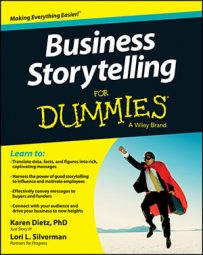There are two ways your business or organization can develop stories about consumers. The first is to gain a deep understanding of market segments through crafting representative consumer personas. The second is to uncover stories and ways to promote heroes and underdogs within each segment.
Develop personas and archetypes
Your organization has a persona embedded in its brand image. There are also consumer personas that embody each market segment. Archetypes can also aid in new product or service development.
The strength of a great story depends on its characters and how well they’re fleshed out and developed. The same is true in marketing and branding: Digging deep into the personas of consumers to get at their emotional core — gathering as much information as possible about them — is an important step. What do you need to develop these character personas, assuming your organization has already identified its market segments?
Try the following:
Dive into who they are and what their lives are like. Identify likes, dislikes, values, favorite hobbies and activities, where they live, what they physically look like, their age range, marital status, ethnicity, city of origin, how they make decisions, and whatever else makes them tick.
Flesh out their needs — beyond the expressed, “I need a new shoe.” In Grow: How Ideals Power Growth and Profits at the World’s Greatest Companies (Crown Business, 2011), author Jim Stengel suggests identifying consumers’ higher-order needs expressed as ideals:
Safety and security
Variety and adventure
Respect and acknowledgment
Connection with others
Enlightenment and growth
The ability to make a contribution
Dig into consumer stories that your organization has collected over time and identify common characteristics, their emotional nature, and sensory information that resonate with them.
To strengthen these personas, identify the archetypes associated with them.
With this information, craft stories about each persona. Use words and visual images that represent who they are at the core of their being. Keep these stories visible and available to staff.
Build stories in which others are the hero
Business storytelling in marketing is far more about consumers as heroes than your company being the hero. These stories need to focus on their journey — how they overcame challenges and saved the day in their own enterprise, family, or community. Your organization is one of the supporting characters who helped them reach their goal. It’s a subtle but important shift.
Why shouldn’t you tell stories about how your enterprise helped them succeed? People identify more closely with individuals, not organizations. The folks they most closely identify with are people just like them — those who have similar issues, problems, calamities, and challenges.
When consumers are the heroes, other consumers and prospects see the results these folks have received, how far they’ve come, and the impact they’re having — all because of the hard work, persistence, and help your organization has provided along the way.
How can you make the shift to having consumers save the day in your organization’s stories?
Uncover the obstacles and challenges that your consumers face.
Learn the results they experienced with your product or service.
Identify how the product or service made a difference in their work life.
Now look at your company’s current marketing materials. Then ask yourself:
Does the copy show that we get who our consumers really are? Does it go beyond simple titles and stereotypes? Have we built strong characters and personas that other staff can identify with?
Does the copy really articulate the specific obstacles and challenges that consumers face in their work or personal life?
Does the copy specify what the future could look like if those obstacles and challenges were removed? Is there any mention of how consumers experience hope and inspiration?
Does the copy offer images of how consumers’ lives are truly different after using our product or service? Or how they’re able to be victorious at work or in their personal life because of our help? Or are we just selling a drill without being interested in the kind of hole it makes?
Never put down your competition. Speaking ill of other enterprises just reflects badly on your organization.
Leverage the underdog
Everyone loves underdogs. Underdogs are unexpected heroes confronting seemingly insurmountable odds. Think David and Goliath. Think Rocky. These folks need or seek redemption. Many of your consumers also have hard luck and turnaround stories in which they’re redeemed in the end.
What’s the overall structure for this type of story?
Describe the significant struggle the person has experienced.
This could be a series of difficulties over many years or one major calamity that has resulted in catastrophe of one kind or another.
Insert a hint of hope.
Somebody shows up to help. A product appears that’s in the testing stages. A new article cites a piece of research that suggests a possible solution.
Share the moment of deliverance from the struggle.
In this big moment, the struggle is no more, and hopes and dreams are fulfilled. Embedded here are steps people took, or attitudes they adopted, to realize their deliverance.
Provide the key message.
What do you want others to take away from the story?
Reference back to the implied action steps or attitudes if this can be done appropriately.
You won’t need to hit people over the head with these because they’ve already been brought forth in the story. Sometimes you can just slip in a gentle reminder.
Show how your organization is celebrating the success.
Return to back stories — from consumers
How awesome would it be to promote consumers by sharing their back stories? And get your organization a brief mention too? Back stories from consumers build their reputation and yours as well. Not only is this sort of story unexpected, your consumers will love you for it.

